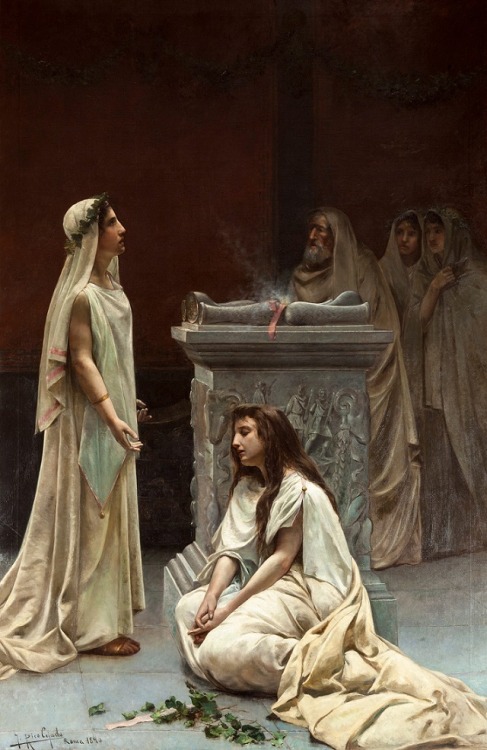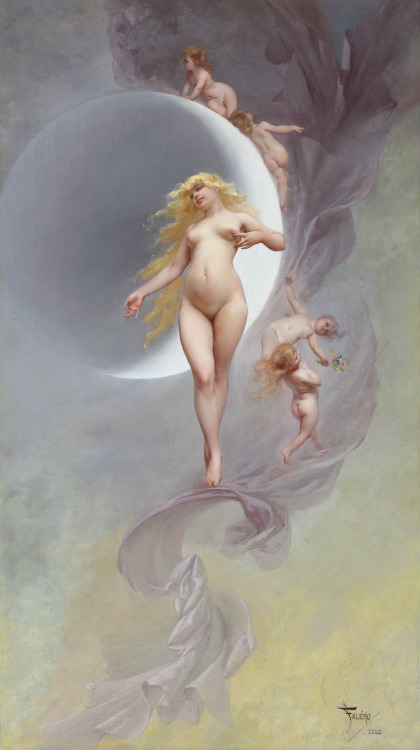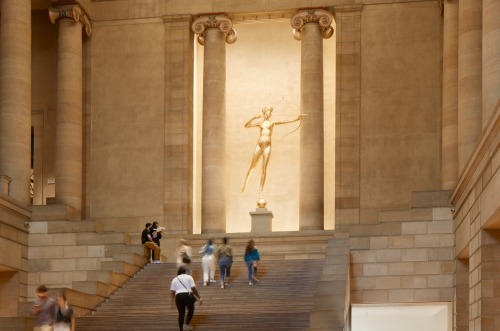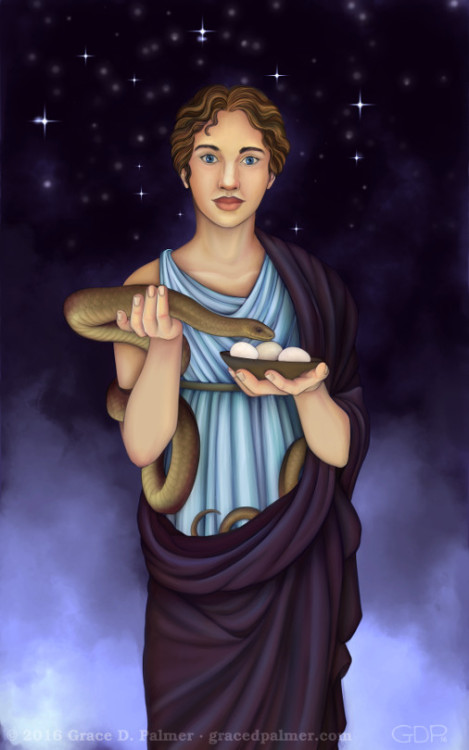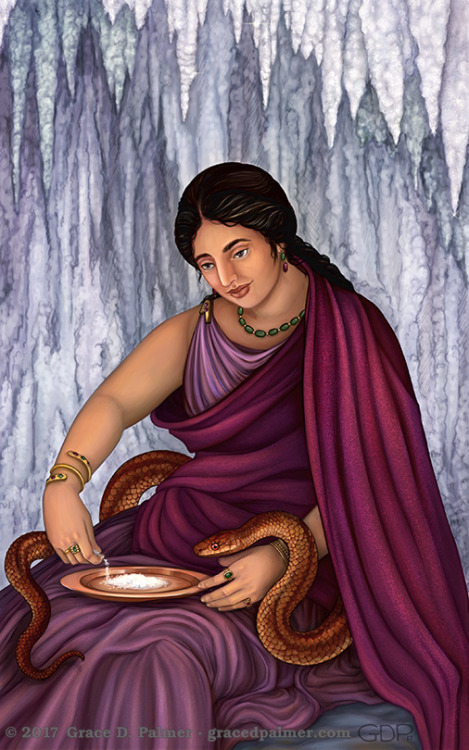#religio romana
Augustus Saint-Gaudens, who was born on this day in 1848, was recognized at the turn of the century as the country’s finest sculptor and “Diana” is arguably his best-known work. See this goddess reign over our Great Stair Hall when you visit the museum.
Photo by Elizabeth Leitzell. “Diana, 1892–93, by Augustus Saint-Gaudens
Post link
Sirona, Salus, Hygeia: a trio of healing goddesses
This summer I painted two commissions of Greek and Roman goddesses of healing. They join the painting of Sirona, a related Gallic deity, which I finished in December 2016.
All three goddesses share the symbolism of the Aesculapian snake, which is often fed from a ritual bowl. Their domains include cleanliness, preservation, and good health.
Post link
Statuette of Pluto
Roman, 1st century CE
At the Getty MuseumStanding figure of Pluto, of mature age, bearded and fully draped in a cloak. A large cornucopia, now broken, rests on his left arm; the missing right hand might have held a scepter, his most common attribute.
Post link
Procession of children honoring a statue of the goddess Diana Fresco, 3rd century CE, Ostia Antica. Collection of the Vatican Museums. Photo: Musei Vaticani via Flickr (X). License: Attribution-NonCommercial-ShareAlike 2.0 Generic (CC BY-NC-SA 2.0)
Today, August 13, is the dies natalis (anniversary) of the dedication of temple of Diana on the Aventine Hill in Rome in the 6th century BCE.
This date also marks the first day of the three-day Nemoralia(Festival of Torches)held in honor of Diana at her temple near Lake Nemi, 30 km/19 mi south of Rome. Worshipers wearing flowers in their hair assembled with torches and candles, bringing votive offerings of bread or terracotta in the shape of stags, children, and of body parts in need of healing. Prayers written on ribbons were tied to trees in the sanctuary. Women and slaves were free of their duties during this festival and enjoyed equality with men and slave-owners. Dogs joined in the celebration, too, adorned with flower crowns. The hunting of animals was forbidden during the Nemoralia in deference to the goddess of the hunt.
Dies natalis also means “birthday”. Members of the College of Antinous and Diana at Lanuvium, 32 km/20 mi southeast of Rome, celebrated the birth of Diana, their patron goddess, and the founding of their society on this date with a feast.
Post link
Altar to Bona Dea. Glanum, Bouches du Rhone, Provence, France.
Today, 1 May, is the dies natalis (anniversary) of the dedication of the temple of Bona Dea on the Aventine in Rome. Bona Dea is a goddess of healing and a protector of the Roman people.
The cult of Bona Dea, the Good Goddess, is married to Faunus, god of the flocks from Latium, and connected with Damia, goddess of the fertile earth from Magna Graecia, who is (perhaps, Demeter). The rites of Bona Dea were secret, permitted only to women and banned for men, though men were allowed to seek healthcare from the medical staff at the goddess’ temples.
The ears on this altar indicate Bona Dea’s reputation for “hearing” prayers.
Post link
The Floralia is a Roman festival honoring Flora, the goddess of spring, flower gardens, and crops. It was held each year from April 27th or 28th to May 3rd. She is married to Favonius, the God of the West Wind. Flora was one of the most important goddesses in the Roman pantheon, one of only 15 deities to have a cult administered by a state priesthood consisting of a married couple, who were appointed for life.
The celebration of the Floralia included theatrical performances, competitive games, and a sacrifice to Flora, presumably at her temple on the lower slope of the Aventine Hill near the Circus Maximus.
Image: Flora Maggiore, Roman statue, 2nd century CE, currently in the collection of the Naples National Museum of Archaeology, Italy. Photo by: Sailko, 2013, via Wikimedia Commons (X). Image license: Creative CommonsAttribution-Share Alike 3.0 Unported I erased the original background and tinted the flowers. Flower field background: Yann Behr, 2020, via unsplash.com (X).
Wishing you a blessed Floralia!
Post link

